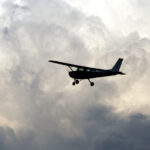Your North Atlantic Track flight plan may get simpler
It’s fun when my non-aviation friends look up at the contrails in the sky and ask me how pilots know where they’re going. “There are highways in the sky,” I would say, leaving them mystified and feeling pretty good about myself and how innovative pilots are. Of course, now and then, someone would want to know more, and I would tell them about flight plans and Victor Airways, but it was always more fun to leave it to their imagination.
It is incredible how we get around the sky these days, and it’s getting more impressive with each new advance in navigation technology. I remember the old days of charts and bearings and airways and jet routes. Do student pilots even have to learn all that low-tech navigation stuff to get their licenses?
As for me, I love the new technology; it’s much safer than the old. Situational awareness is easier to visualize with GPS, and moving maps, and the options to get around weather have increased exponentially. I think the old Victor Airways will soon be a thing of the past for modern-day aviators.
Here’s my question: Will the North Atlantic’s Organized Track Structure (OTS) also be a thing of the past soon? It sure is looking that way. As of March 1, anyone flying between North America and Europe will be able to fly outside of the North Atlantic OTS if they are at FL330 or below.
Pilots will now be able to file a random route plan and choose any route that works for them. The reason is real-time satellite-based ADS-B surveillance system. Before real-time monitoring, the tracks were necessary to create a predictable environment for both ATC and the pilots. About 12 daily pre-selected tracks were established based on the most favorable winds to make it easier and more efficient for pilots to file.
But since the introduction of ADS-B monitoring, NATS could safely decrease the separation limits from about 40 NM to 14. What a difference that made! Pilots found themselves with more flexibility in both speed and trajectory, and more planes were able to take advantage of the best routes within the OTS system.
Maybe the only good thing to come from the Covid pandemic was the reduced number of transatlantic flights, allowing NATS and Nav Canada to safely use satellite monitoring to control a mere 200 flights, instead of the typical pre-pandemic 1300. In addition, last March, NATS did not create any westbound tracks as a precursor to possibly eliminating the OTS system. Having pilots file outside the OTS structure is the next step in that effort.
The ability to choose non-OTS tracks will result in considerable fuel savings, much lower CO2 emissions, and significant time savings. Flight plan flexibility can only be a good thing for transatlantic pilots, and now that air traffic is at or above pre-pandemic levels, the real test of the system will soon begin.









